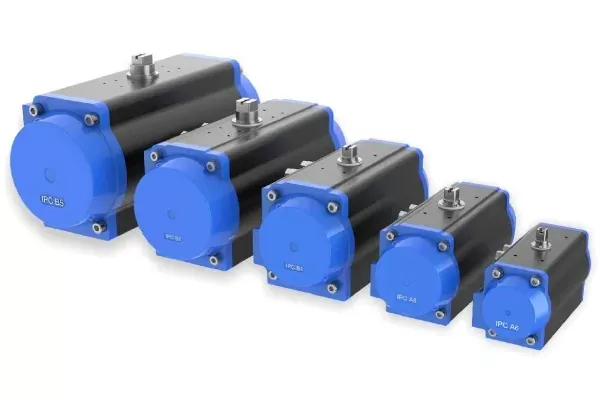Notifications

5 minutes, 31 seconds
-40 Views 0 Comments 0 Likes 0 Reviews

We are a leading control valve manufacturer in China, providing high-quality valves and control actuators designed to meet a wide range of industrial applications.
Pneumatic valve actuators are crucial components used to control valves in industrial systems, especially where rapid response and energy efficiency are priorities. Their operation relies on compressed air to generate motion that opens or closes a valve by moving the valve stem—either rotating or lifting it, depending on the valve type.
There are two main types of pneumatic actuators: single-acting (spring return) and double-acting. Understanding their differences and working principles is essential for selecting the most suitable actuator for a given application.
Single-acting actuators use compressed air and a spring to move the valve stem. They come in two configurations:
Normally Open (NO): Air pressure pushes the piston outward to close the valve. When air is removed, the spring pushes the piston inward, opening the valve.
Normally Closed (NC): Air pressure pushes the piston outward to open the valve, while loss of air pressure lets the spring close the valve by pushing the piston inward.
Single-acting actuators are ideal for fail-safe applications that require the valve to automatically return to a default (open or closed) position upon air supply failure.
Double-acting actuators use compressed air alternately applied to two ports, controlled by an external solenoid valve. Air pressure moves the piston in either direction—both opening and closing the valve are powered by air, without relying on a spring.
Advantages of double-acting actuators include faster operation and precise control, making them well-suited for complex systems requiring rapid and accurate valve positioning.
Air to Port A (Activation): Compressed air enters port A, pushing the piston outward and compressing the spring, causing the valve to move (open or close depending on configuration).
Loss of Air Pressure: When air pressure is removed, the spring decompresses, pushing the piston back to its default position, ensuring fail-safe action.
This simple mechanism guarantees automatic return to a safe position in case of air failure.
Air to Port A (Opening): Air pressure forces the piston outward, rotating the valve stem to open.
Air to Port B (Closing): Air pressure moves the piston inward, rotating the stem to close the valve.
Air Supply Alternation: Air is alternately supplied to ports A and B to precisely control the valve position in both directions.
Since both opening and closing are powered by air, double-acting actuators offer enhanced speed and control compared to single-acting types.
| Feature | Single-Acting Actuator | Double-Acting Actuator |
|---|---|---|
| Operation | Uses compressed air plus spring return | Uses compressed air for both opening and closing |
| Fail-Safe Capability | Yes, returns to default position on air loss | No inherent fail-safe; depends on air supply |
| Air Consumption | Lower (air required only for one direction) | Higher (air required for both directions) |
| Speed and Control | Slower, less precise | Faster, more precise |
| Complexity | Simpler design | Requires external solenoid valve control |
| Typical Applications | Emergency shutdown, fail-safe systems | High-speed, precise control in automated systems |
Consider the following factors:
Fail-Safe Requirements: Choose single-acting actuators when automatic return to a safe position is critical.
Speed and Precision: For rapid and accurate valve movements, double-acting actuators are preferred.
Air Supply Capacity: Single-acting actuators are more air-efficient, suitable where air supply is limited.
System Complexity: Simple systems often use single-acting actuators; complex, automated systems benefit from double-acting actuators.
Pneumatic valve actuators play an essential role in industrial valve control, offering efficient and reliable operation. Understanding the fundamental differences between single-acting (spring return) and double-acting actuators—along with their working principles—ensures proper actuator selection for your application. Whether prioritizing fail-safe operation, speed, or precision, the right pneumatic actuator enhances system performance, safety, and reliability in diverse industrial environments.Know more about Google SEO Directory

